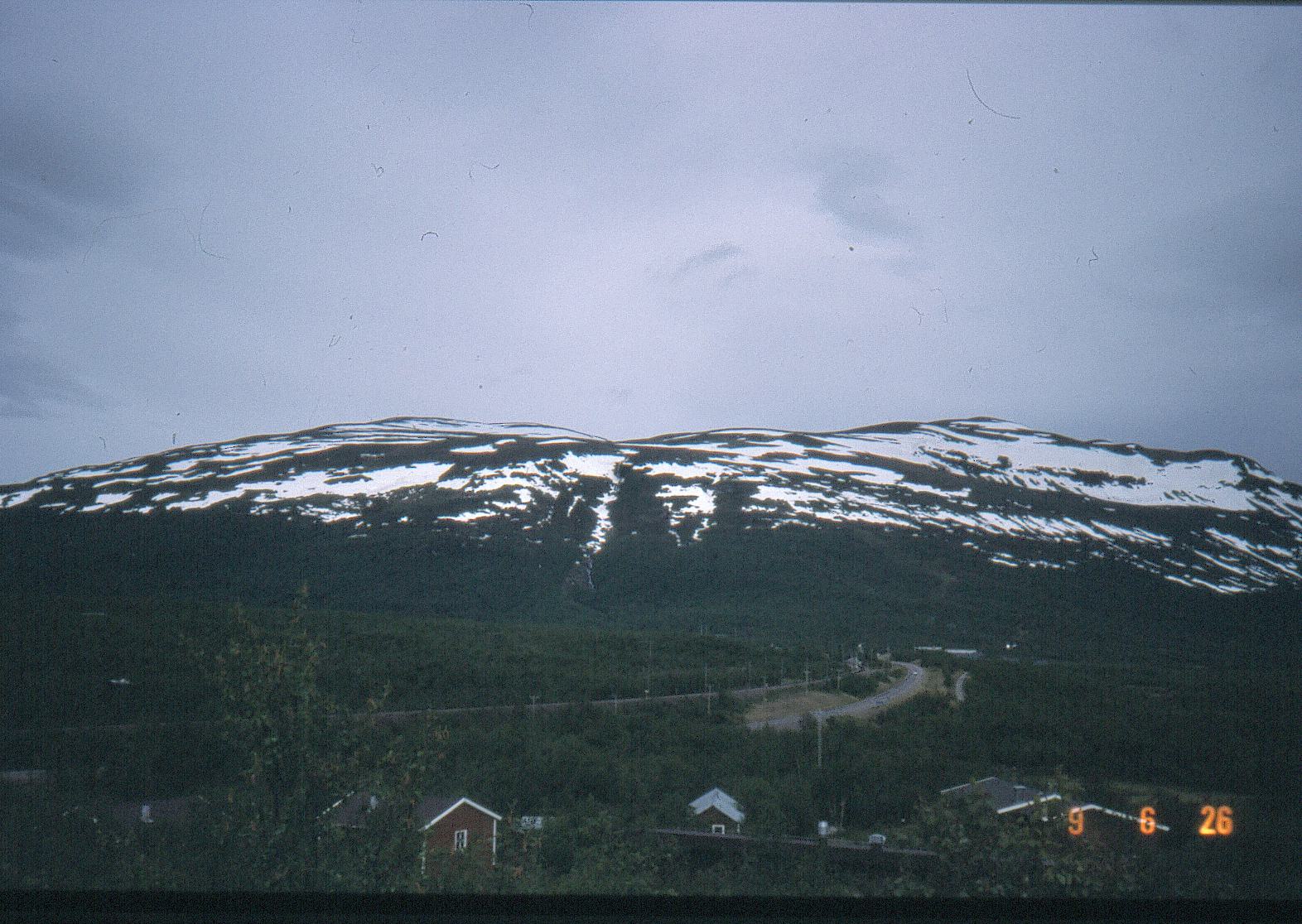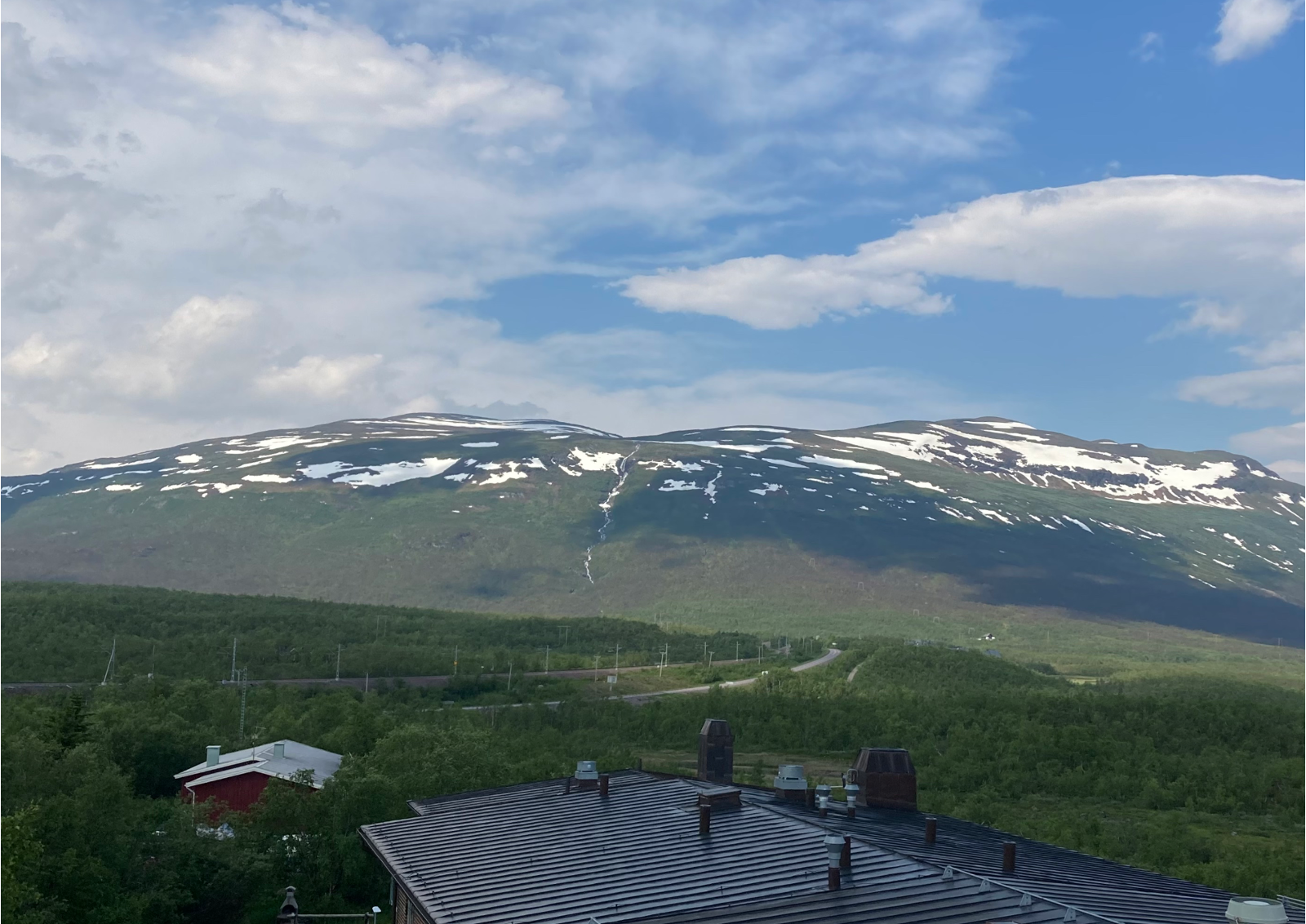Snow Depth
Snow depth is the the total amount of snow that falls over a given period.
When we talk about “climate change”, it’s easy to confuse climate with another common concept - weather. Weather refers to short-term atmospheric conditions, like whether tomorrow will be sunny or windy. The presence of snow on Abisko’s mountains varies year-to-year and day-to-day, and therefore isn’t a great indicator of climate. However, it can certainly reflect seasonal extremes, which are measurable events that can be tied to long-term climate trends. For example, a week-long heatwave at the end of June 2022 melted much of the high elevation snow in the mountains around Abisko, so when compared to the same dates in 1989, the difference is quite clear. While the snow difference itself could be attributed to weather rather than climate, the prevalence of extreme events such as heat waves is something that can be studied and averaged long-term. Studies show that extreme high temperature events have increased since 1914, especially during spring and autumn.
The presence of snow fields during the spring, summer, and autumn is crucial to Arctic ecosystems. The prevalence of snow fields well into the growing season creates an ecological niche for species that grow in newly thawed areas and are able to thrive with a shorter growing season. During the summer, snow fields provide a haven for reindeer experiencing insect harassment and heat-induced stress, as well as providing valuable food sources along their melting edges. Additionally, snow cover reflects solar energy away from earth’s surface, which combats warming. All of these important roles are at risk as snow fields experience more extreme temperatures in the spring and autumn.





